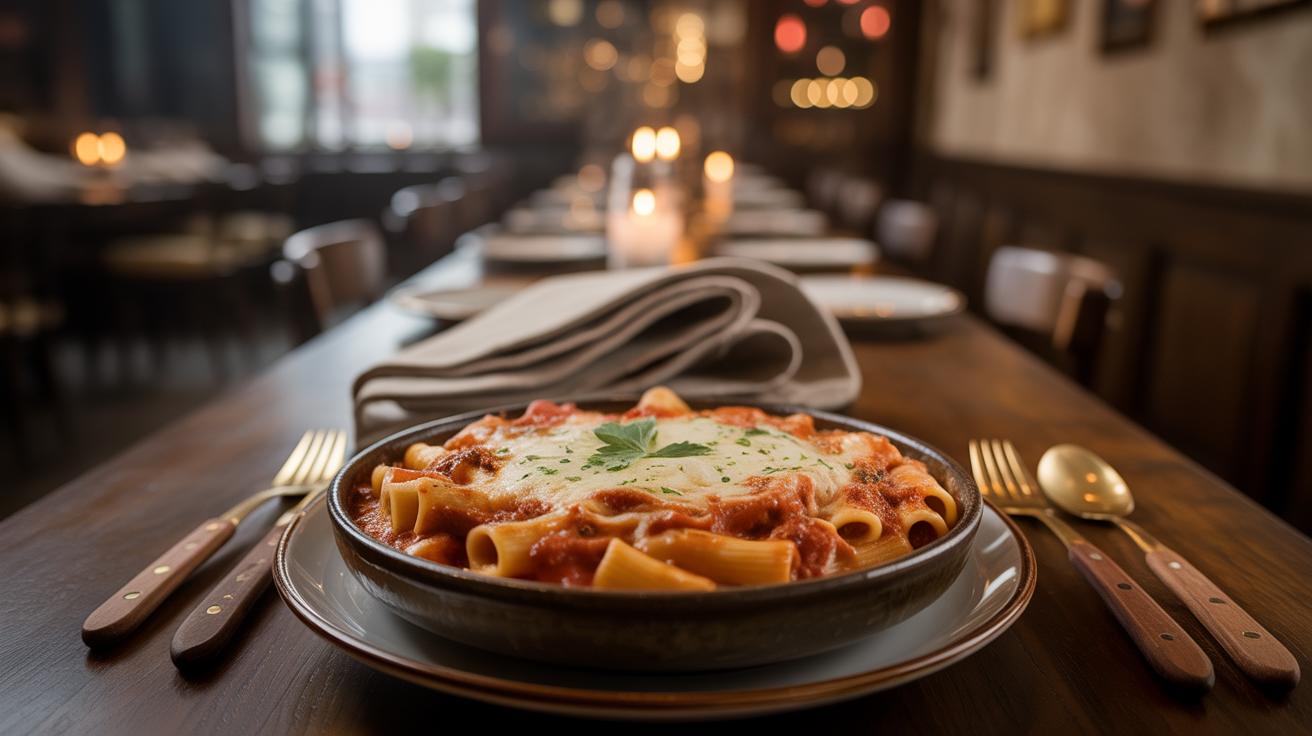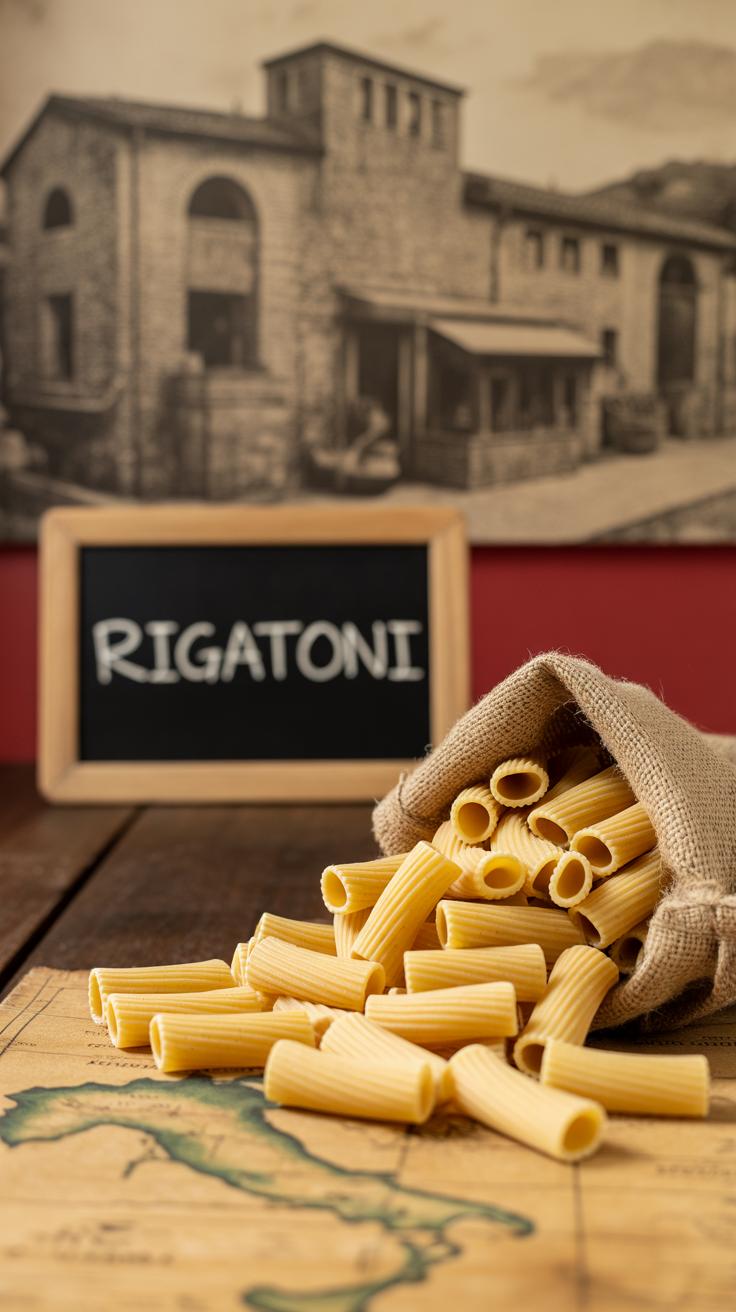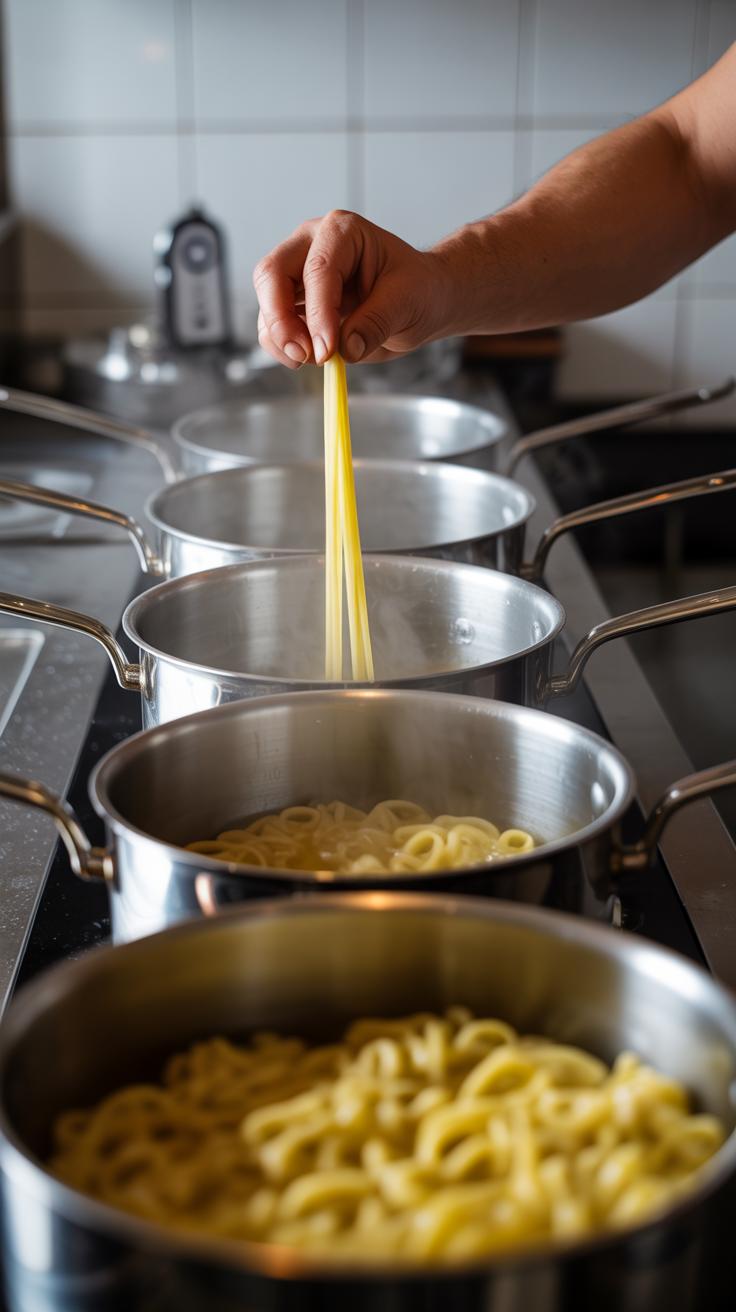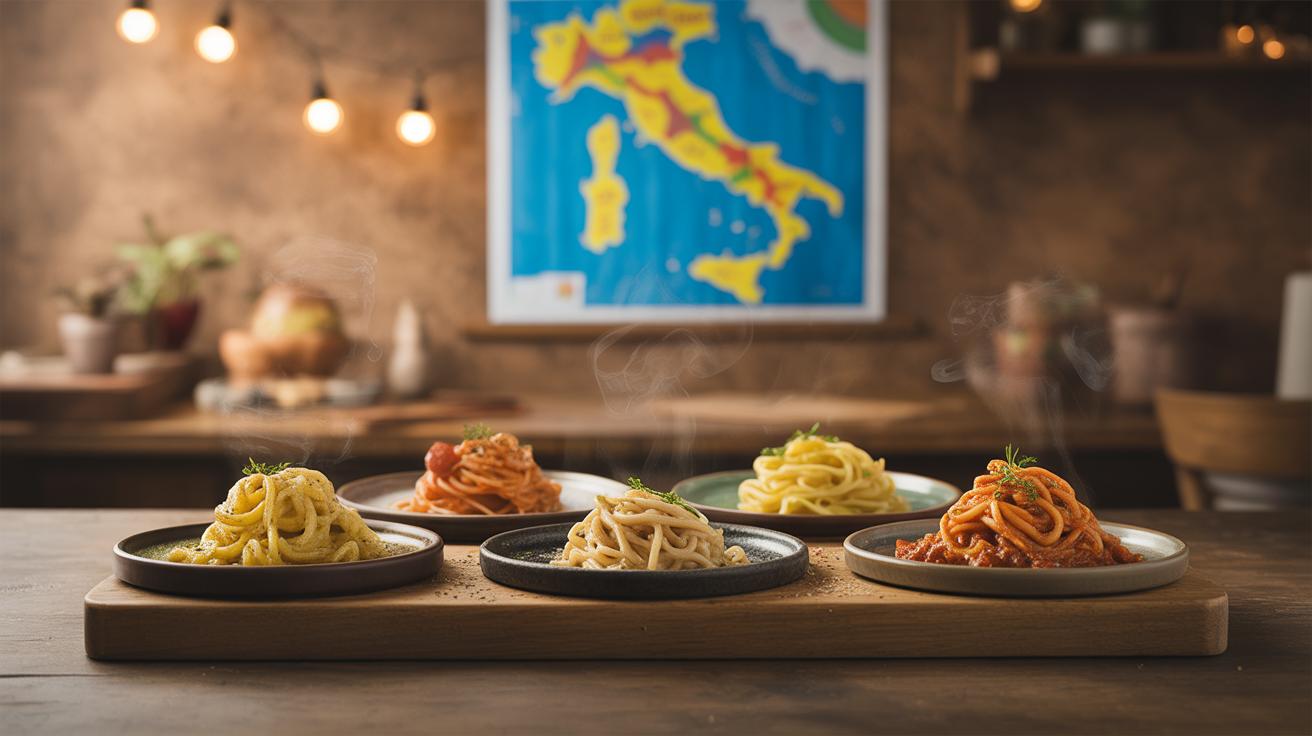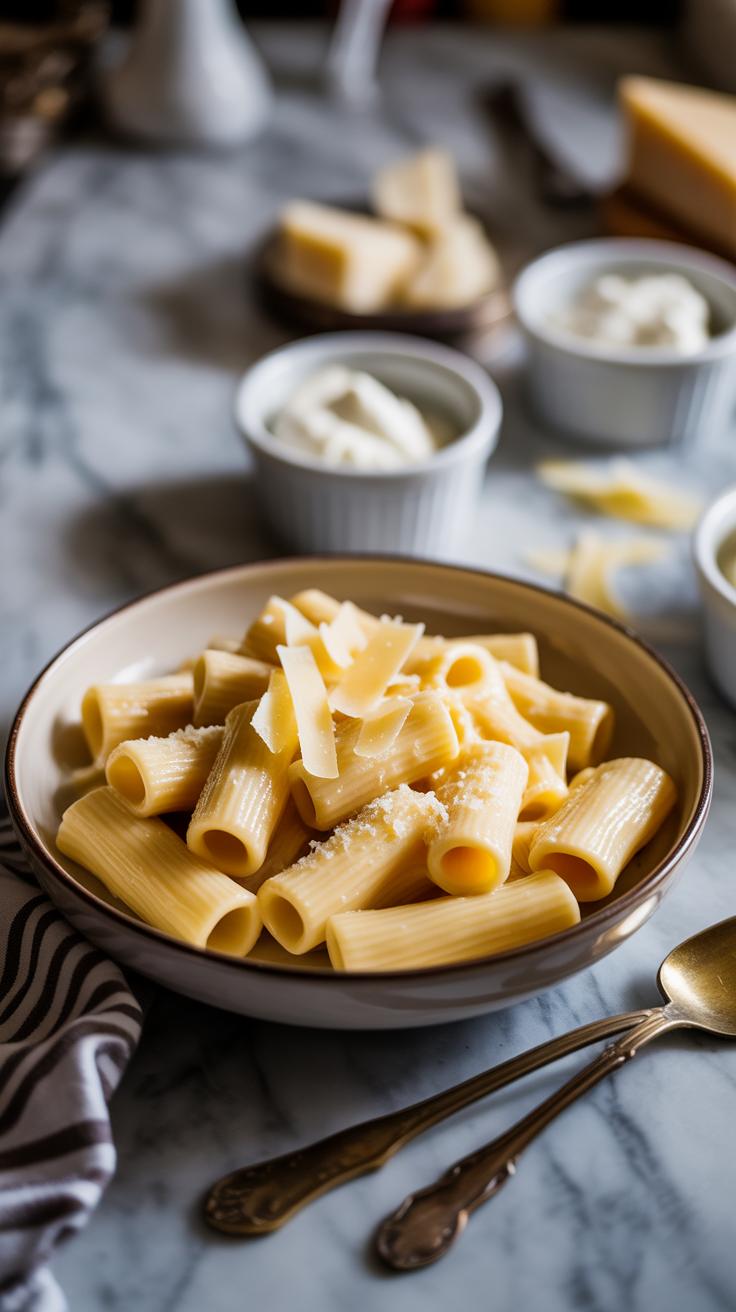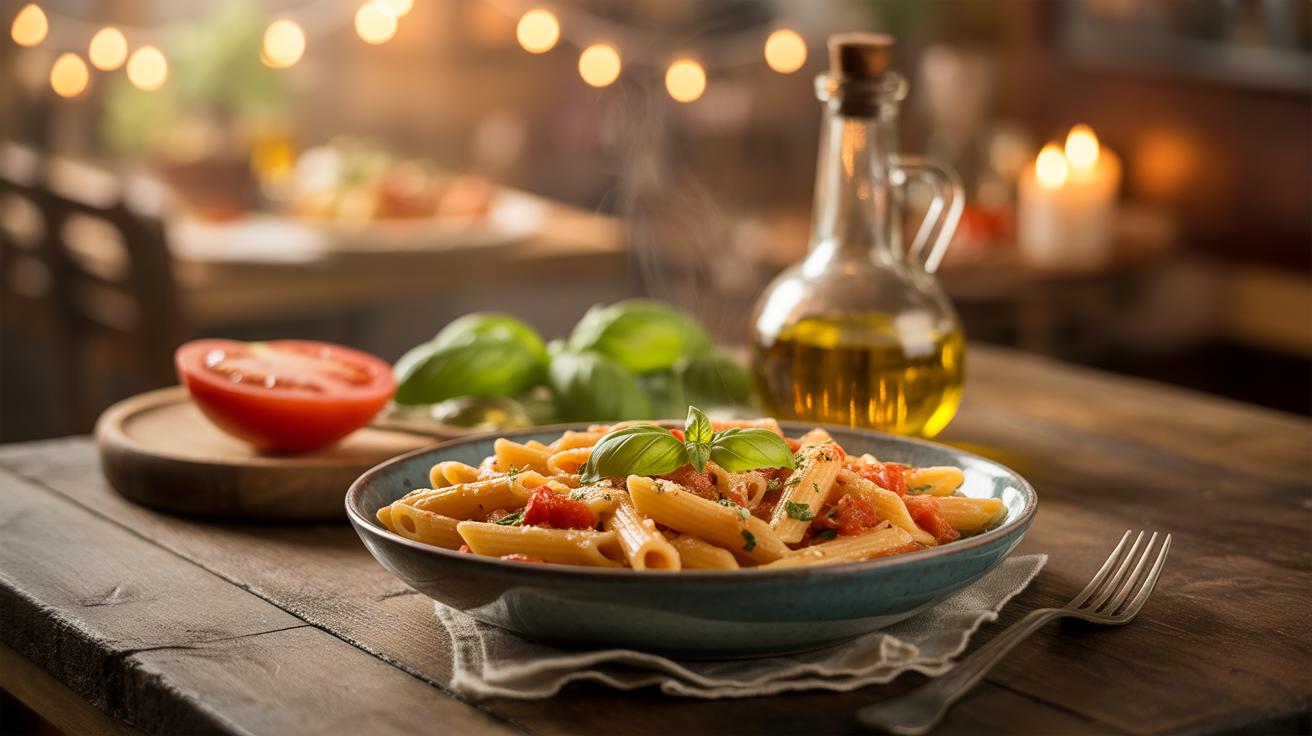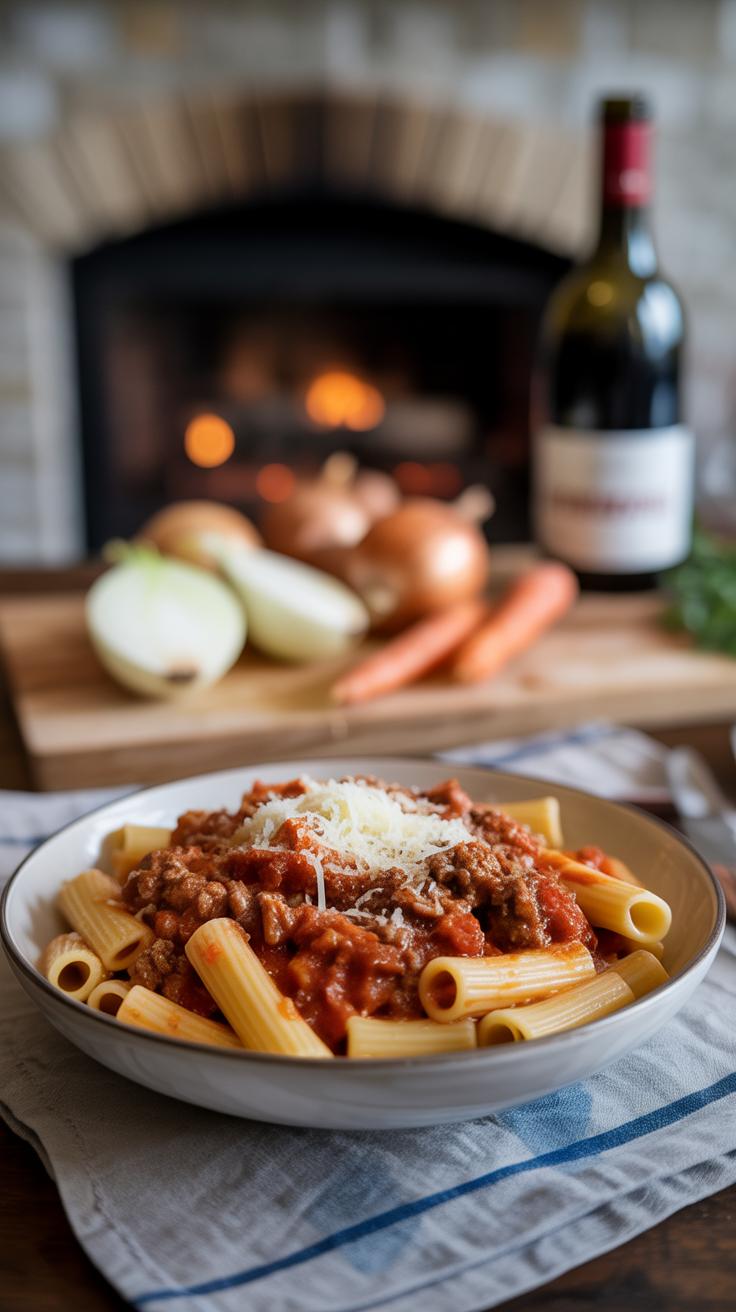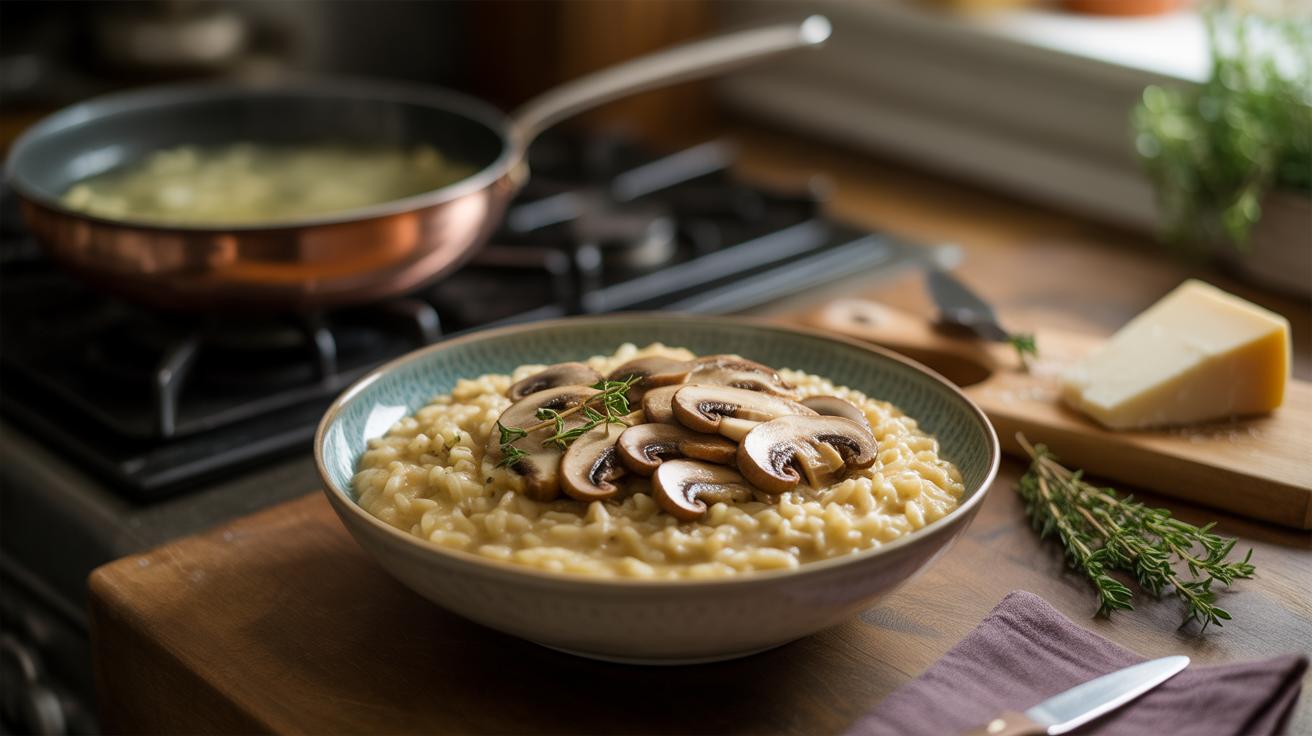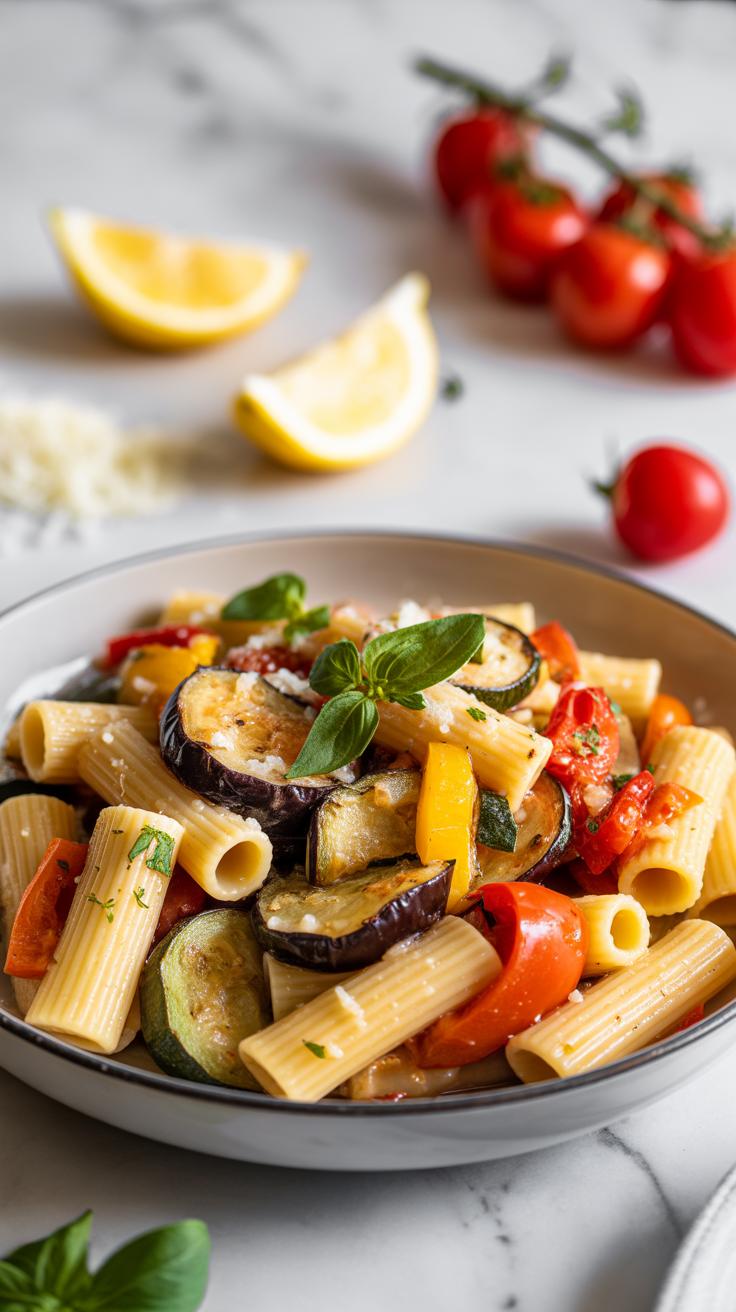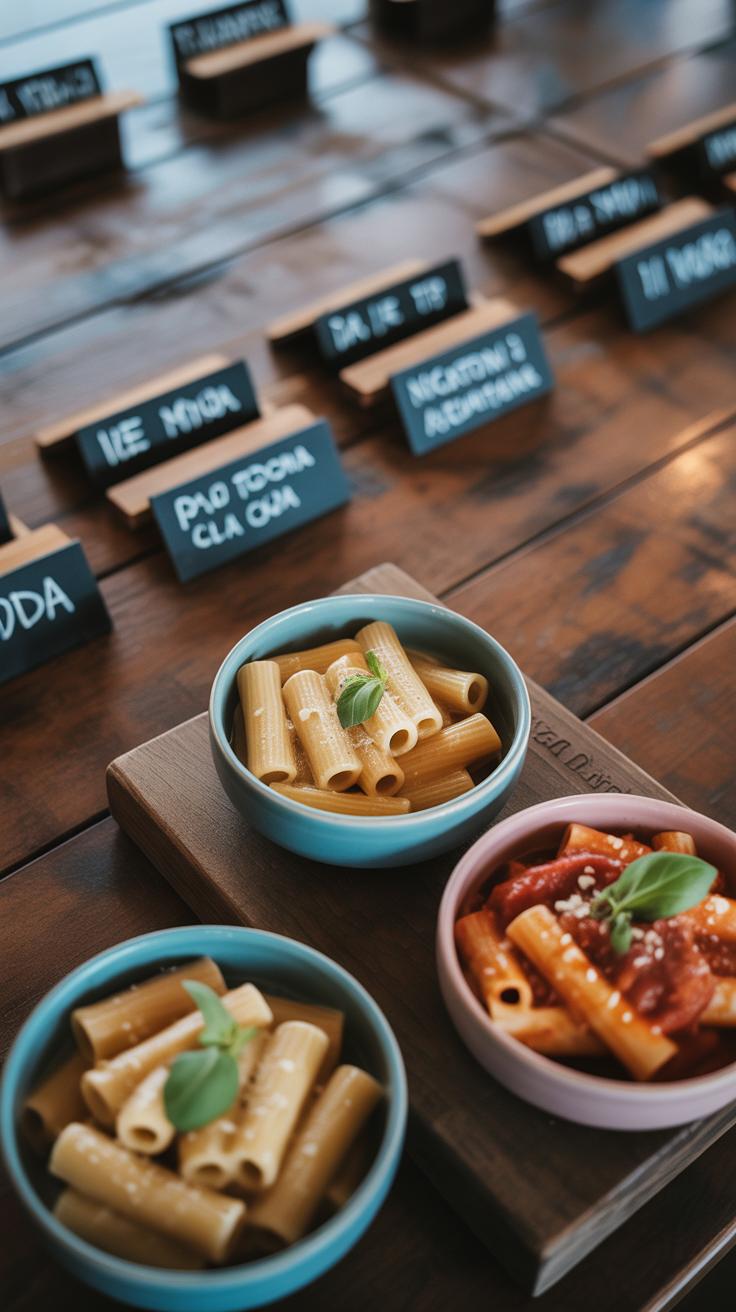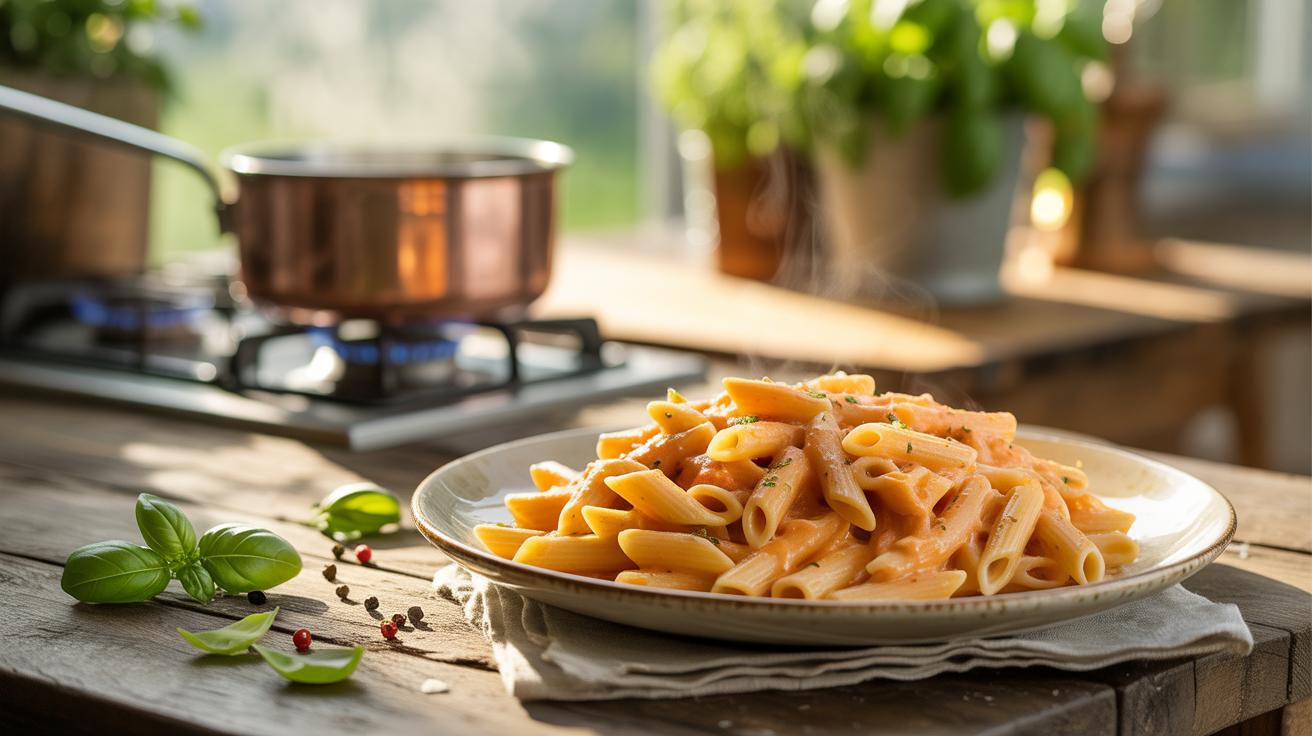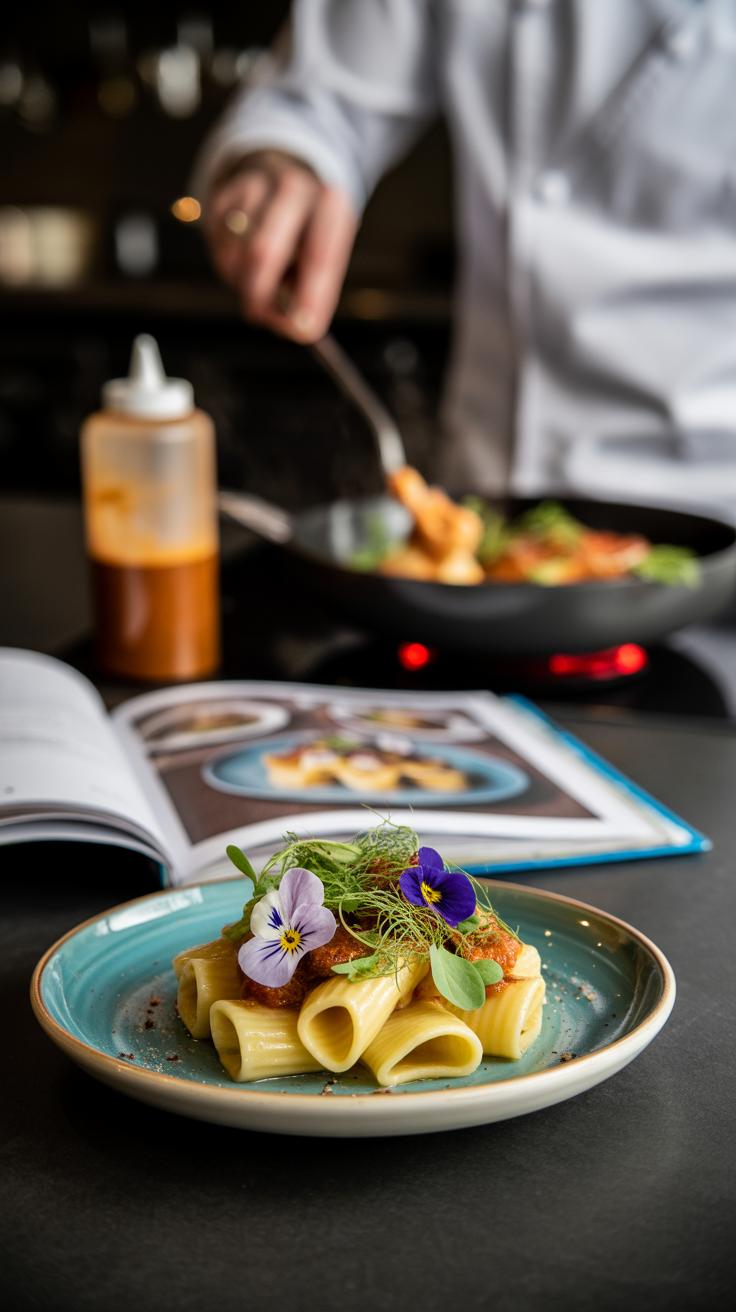Introduction
Rigatoni is a type of pasta that plays a big role in Italian cooking. It looks like a large tube with ridges on it. These ridges help stick to sauces, making every bite full of flavor. It is popular in southern and central Italy, and many people love it for its texture and shape.
In this article, you will learn about rigatoni’s history and why it is special. You will also find recipes that are easy to cook and very tasty. These recipes use rich sauces and ingredients to make hearty meals that you and your family will enjoy. Let’s explore the world of rigatoni and make meals that bring joy and comfort.
What is Rigatoni and Where Does It Come From
Rigatoni is a type of pasta that traces its roots back to Italy, mostly favored in Southern and Central regions like Lazio and Campania. It’s characterized by its large, tube-shaped form, roughly an inch long, and wider than penne or ziti. The name itself hints at its features—“rigato” means ridged in Italian, so rigatoni has those pronounced ridges running lengthwise.
Why did it become popular there? It probably comes down to the pasta’s ability to hold up well against thicker sauces, common in hearty Italian cooking from these parts. Think meaty ragù or vegetable-heavy sauces that need a sturdy vessel. People tend to appreciate rigatoni for its comfort and versatility—maybe that’s why it’s such a staple at the family table across those areas.
The Shape and Texture of Rigatoni
Physically, rigatoni looks quite distinctive. It’s a short, broad tube, open at both ends with deep ridges lining the outside. Those ridges aren’t just for show—they actually make a big difference in texture and flavor.
The ridges catch sauce much better than smooth pasta does, so every bite is coated, not just the inside or exterior. The hollow center traps chunky bits like vegetables or sausage, making the dish more satisfying overall. When you stir rigatoni in a pan, you’ll notice how it clings to whatever it’s tossed with. That textural grip is a key reason why rigatoni performs well with all sorts of sauces—from tomato-based to creamy, even cheese-heavy blends.
Rigatoni in Italian Cooking Traditions
In Italy, rigatoni isn’t just random. It has its place in classic dishes that often define regional flavors. For example, in Rome, it’s the go-to for “rigatoni alla carbonara” or “amatriciana.” These dishes rely on the pasta’s ability to hold on to rich, flavorful sauces made from eggs, cheese, or cured pork.
Southern Italy also uses rigatoni in slow-cooked ragù or baked pasta casseroles. The pasta’s size helps balance hearty, sometimes rustic ingredients — like robust tomato sauces with chunks of meat or spicy sausage. You might ask why other shapes don’t make the cut here. I’d say it’s the pasta’s rugged texture and shape that keeps these dishes authentic and satisfying.
If you’re wondering what you can do with rigatoni beyond the usual, it’s worth experimenting with it in baked dishes that call for lots of sauce or melted cheese. Its form holds everything together rather than letting the ingredients slip off, which, frankly, is a relief when you want that rich, hearty mouthful every single time.
How to Cook Rigatoni Perfectly Every Time
Getting rigatoni just right feels like a small victory sometimes. The goal? Pasta that’s firm but not hard, tender without turning mushy. Start with plenty of water—roughly 4 to 6 quarts for every pound of rigatoni. You want it to swim freely so it doesn’t stick together.
Bring the water to a strong boil before adding salt. Speaking of salt, don’t skimp here. Around 1 to 2 tablespoons per 4 quarts works well. Salt seasons the pasta from the inside out, so it actually improves flavor in a way that sauce alone won’t fix.
When you toss the rigatoni in, stir well right away. This helps keep the tubes separate. The typical cooking time ranges from 10 to 14 minutes, but don’t rely too heavily on the package—times vary based on brand and thickness.
About halfway through, taste a piece. The ideal rigatoni offers a bit of bite—what Italians call al dente. Not crunchy, but still with a slight resistance when you chew it. I like to check a few times near the end to avoid overshooting.
Draining is quick and thorough. You might save some pasta water if you want to mix it into the sauce later for a silkier finish. Avoid rinsing unless you’re planning a cold pasta salad; rinsing strips flavor and cools the tubes, which isn’t great for rich, saucy dishes.
Simple Tomato Sauce for Rigatoni
Ingredients for a Rich Tomato Sauce
To make a tomato sauce that truly complements rigatoni, keeping it simple often works best. Fresh, quality ingredients make all the difference here. You’ll need:
- Ripe tomatoes—preferably plum tomatoes or canned San Marzano for consistency
- Extra virgin olive oil
- Fresh garlic cloves, minced
- A handful of fresh basil leaves
- Salt and freshly ground black pepper
- A pinch of sugar, if the tomatoes taste too acidic
- Optional: a small onion, finely chopped for some added depth
These basics come together to create a sauce that’s vibrant yet hearty enough for rigatoni’s ridges to catch it nicely.
Cooking the Sauce to Enhance Flavors
Start by heating olive oil gently—don’t rush this step. Add garlic (and onion if using) and let them soften slowly; there’s a subtle magic in this aroma building up. Then pour in your tomatoes, crushing them by hand or with a spoon if whole.
Keep the heat low and let the sauce simmer—really simmer—so the flavors meld and deepen over about 30 to 40 minutes. Stir occasionally. Don’t be tempted to speed this up by turning the heat too high; you’d lose the layered taste you’re after.
If the acidity feels sharp, a touch of sugar balances it without making the sauce sweet. Towards the end, toss in those basil leaves. They’ll wilt and release fragrance without cooking away entirely. This sauce isn’t complicated, but patience is key. What do you think; would you try this simple base, or prefer something with more herbs or spice? It’s surprising how often the most straightforward recipes make the heartiest dinners.
Rigatoni with Cheese and Cream Sauces
Rigatoni’s sturdy, ridged shape holds creamy sauces really well. When you think of Alfredo, or a rich cheese sauce, rigatoni stands up nicely—its tube holds sauce inside and its grooves trap every bit on the outside. That makes every bite full of flavor and texture, which is probably why these pairings are so popular when you want comfort food without fuss.
Choosing Cheese for Rigatoni Dishes
Not all cheeses work the same in creamy rigatoni dishes. Some melt better, some add sharpness, and others bring a mild creaminess. Parmesan is a classic choice—it gives a nutty, salty kick and melts smoothly into the sauce.
You might want to experiment with Pecorino Romano, which is sharper and saltier but worth considering if you like a bolder taste.
Mozzarella, while milder, gives a stretchy, gooey texture that’s perfect if you want something less complex but very comforting. And then there’s fontina, silky and buttery, which gives a smooth, rich sauce that clings well to rigatoni.
Blending cheeses can be fun, too: try mixing Parmesan and fontina, or mozzarella with a bit of sharp cheddar for a somewhat unexpected but tasty twist. The key is balancing melt and flavor.
Making a Simple Cream Sauce
A basic cream sauce doesn’t need many ingredients. Here’s a simple approach that I often use when I want something quick and good:
- Start by warming butter in a pan until it melts completely.
- Pour in heavy cream and simmer gently—don’t rush this part, or the sauce might separate.
- Stir in grated cheese slowly, letting it melt before adding more. This helps achieve a smooth texture.
- Add a pinch of salt and pepper—sometimes even a small dash of nutmeg adds a surprising depth.
- If the sauce gets too thick, splash in a bit of pasta water to loosen it up; rigatoni sauce should coat, not drown.
This kind of sauce feels rich but is straightforward, especially compared to tomato-based options. You might find yourself switching between the two depending on the mood or ingredient availability. The creaminess enhances rigatoni’s bite and offers a cozy, almost indulgent dish that’s easy to personalize.
MeatBased Rigatoni Recipes
Sausage and rigatoni work well together because the shape of the pasta holds onto the flavors packed into sausage sausages release while cooking. When you brown sausage chunks or crumbles, they develop a crust that adds texture alongside the pasta’s ridges. This contrast makes every bite interesting.
To cook them together, start by removing the sausage from its casing if you’re using links. Brown the meat in a hot pan until nicely caramelized. Then toss in aromatics like garlic or onions, followed by tomatoes or a spicy tomato sauce. Let everything simmer so the flavors meld. Finally, stir in rigatoni that’s cooked just shy of al dente—its firmness will hold during mixing and further heating.
Ground meat offers a more flexible approach. Whether beef, pork, or a mix, ground meat easily absorbs spices and can be combined with various sauces. For example, a rich meat ragù calls for slow cooking ground beef with herbs, wine, and diced tomatoes until thick and hearty. Stir this sauce through rigatoni and finish with grated Parmesan. You can also try quick skillet dishes where ground pork is cooked with mushrooms and cream, then tossed with rigatoni for a warm, rustic dinner.
Think about what flavors you want to highlight. Spicy sausage? Mild meat sauce? Mixing meat with rigatoni brings layers of richness that complement the pasta’s shape, texture, and ability to soak up sauces. It’s meat and pasta—simple, but never dull.
Vegetarian Rigatoni Options
Roasted Vegetables with Rigatoni
Roasting vegetables brings out a depth of flavor that’s hard to beat, especially with rigatoni. You can toss a colorful mix—think bell peppers, zucchini, cherry tomatoes, maybe some red onions—onto a baking sheet, drizzle with olive oil, salt, and pepper, then roast until caramelized and tender. It’s simple but satisfying.
Once the veggies are done, mix them into cooked rigatoni while it’s still warm. The pasta’s ridges catch bits of caramelized skin and juices, making every bite interesting. I find that adding a handful of toasted pine nuts or a sprinkle of Parmesan really rounds things out. Though some days, I skip cheese entirely and rely on the veggies’ natural sweetness.
Give some thought to the roasting time—go too long and your veggies get mushy, too short, and they won’t develop that roast flavor. Around 25–30 minutes at 400°F often works well. You might wonder if this makes a meal or just a side, but with hearty rigatoni and bold roasted flavors, it feels like proper comfort food.
Herb and Olive Oil Dressings
Light, herb-based dressings let rigatoni shine without overpowering it. Try whisking together good-quality olive oil with fresh basil, parsley, or oregano. A splash of lemon juice or a touch of garlic can elevate the mix, giving it brightness and character. These dressings are quick to prepare and keep your meal fresh and vibrant.
This approach feels less like a sauce and more like a dressing, which makes it perfect for warm or even room-temperature dishes. Sometimes, I add chili flakes for a little kick, but it depends on my mood. The key is to keep the dressing balanced so it enhances the veggies without drowning them.
Herbs wilt quickly in heat, so stir them in after cooking the rigatoni. If fresh herbs aren’t on hand, dried ones work too, though they lack the same punch. This style of dressing lets you experiment—maybe add toasted nuts or sun-dried tomatoes next time—to keep your vegetarian rigatoni meals from ever feeling repetitive.
Classic Rigatoni Dishes from Italian Cuisine
Rigatoni alla Pajata Explained
Rigatoni alla Pajata is one of those dishes that feels like a secret handshake among Romans. It features rigatoni pasta tossed with a sauce made from the pajata—the intestines of a milk-fed calf, still containing the chyme, or partially digested milk. The sauce itself is simple but deeply flavorful, usually including tomato, pecorino cheese, and sometimes a touch of white wine. Cooking it requires a careful balance; you simmer the pajata gently, allowing the natural creaminess of the chyme to thicken into a velvety sauce that clings perfectly to the rigatoni’s ridges.
Not everyone might be eager to try this, especially outside Italy. But if you do, it connects you to Roman culinary history in a real way, linking rural tradition with city flavors. It’s a dish you wouldn’t find everywhere, which makes it a bit special—definitely a conversation starter at the dinner table.
Other Regional Rigatoni Specialties
Rigatoni isn’t just tied to Rome. Various Italian regions have their own ways of showcasing this pasta’s robust shape. For example:
- Rigatoni alla Norma – Originating from Sicily, this dish pairs rigatoni with eggplant, tomato sauce, basil, and ricotta salata. The flavors marry in a way that feels both hearty and fresh.
- Rigatoni con Salsiccia e Funghi – Popular in central Italy, it features crumbled sausage and earthy mushrooms simmered in a light tomato sauce, perfect for layering those richer, meaty notes with the pasta’s texture.
- Rigatoni al Ragù Bolognese – While traditionally tagliatelle gets the Bolognese treatment, rigatoni also makes great use of the thick meat sauce, capturing it in its grooves for a satisfying bite.
Each regional recipe reveals different priorities—some value intense sauces, others balance hearty ingredients with freshness. You might find you prefer one style over another, or maybe you—like me—enjoy experimenting to see how the same pasta adapts to vastly different flavors.
Pairing Rigatoni with the Right Wines and Sides
Wine Choices for Rigatoni Meals
Choosing the right wine for rigatoni can sometimes feel a bit tricky. The sauce usually dictates the best match, but don’t stick too rigidly to rules—your taste matters most. For creamy or cheesy rigatoni dishes, like rigatoni bake with a rich béchamel, a medium-bodied white wine with some acidity, such as a Pinot Grigio or Verdicchio, often cuts through the richness well. You might find that a fuller Chardonnay works, but keep it unoaked to avoid overwhelming the dish.
When rigatoni is served with tomato-based sauces, which tend to be tangy and bold, wines with higher acidity are a good fit. A Chianti or a Sangiovese wine usually holds up wonderfully, matching the acidity and highlighting the herbs. In some cases, a Barbera, with its vibrant red fruit notes, surprises me with how well it balances the tangy sauce and hearty pasta.
For meat-heavy or spicy rigatoni recipes, something with a bit more body and spice—like a Zinfandel or Nero d’Avola—can complement the flavors nicely. Yet sometimes, surprisingly, a dry rosé offers a refreshing contrast and lightens the dish.
Side Dishes That Complement Rigatoni
Rigatoni is pretty filling on its own, but pairing it thoughtfully enhances the meal. Sticking to simpler sides can be more rewarding than piling on. A fresh green salad with a tangy vinaigrette often brightens the palate after a heavy rigatoni dish, especially with creamy sauces. You’ll want something crisp, maybe arugula or radicchio tossed with lemon and olive oil.
Roasted or sautéed vegetables also pair well and add texture. Consider asparagus spears, broccoli rabe, or even some caramelized Brussels sprouts. They bring an earthiness without competing with the pasta. Garlic bread is a classic, but I sometimes find it too heavy alongside baked rigatoni; a lightly toasted ciabatta, drizzled with good olive oil instead, feels just right.
One more thought—sometimes just a simple bowl of marinated olives or artichokes can act as a palate cleanser. They’re small, flavorful bites that keep the meal balanced without overwhelming your rigatoni masterpiece. It’s interesting how small touches like these make a meal feel complete, don’t you think?
Tips to Make Your Rigatoni Meals Stand Out
Fresh herbs are a game changer when it comes to rigatoni. Basil, for instance, brings a sweet, slightly peppery note that brightens rich tomato sauces. Parsley adds a fresh, clean finish, cutting through heavier, creamy dishes. Don’t be shy about chopping them right before serving—freshness matters here.
Spices, too, shape your dish’s personality. Try a pinch of red chili flakes to introduce subtle heat or a dash of smoked paprika for warmth and color. Ground black pepper cracked at the table often gives that final punch you didn’t realize was missing.
When you plate rigatoni, try to think beyond just dumping it on a plate. Twirling it gently with a fork can form neat little nests that feel thoughtful. Adding a sprinkle of grated cheese or a drizzle of good olive oil enhances both look and taste.
For color contrast, place rigatoni against a backdrop of fresh greens or roasted vegetables. It can create a visual balance that’s appealing. Maybe experiment with bowls rather than flat plates. Sometimes, depth invites more anticipation before the first bite.
Ultimately, the details matter—the fresh herb you throw in, how you twist the pasta on your fork—these small touches invite a more memorable meal. What’s your favorite herb or a spice you think should get more spotlight in rigatoni dishes? It’s a simple question that often leads to interesting answers.
Conclusions
Rigatoni is more than just pasta. Its shape and ridges make it perfect for rich and thick sauces. You can make many dishes using rigatoni, from classic Italian recipes to new ideas that suit your taste. Cooking rigatoni is simple, and the results are delicious meals that bring warmth and satisfaction.
By choosing the right sauce and ingredients, you can create hearty meals that everyone will love. Now you have the knowledge and ideas to make fantastic rigatoni dishes. Enjoy your cooking and bring rich flavors and joy to your table with rigatoni.

